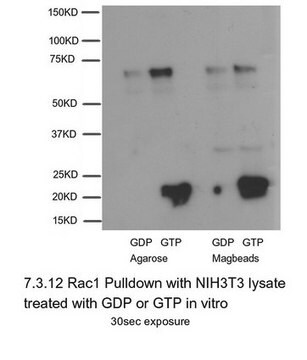202371
Poly(éthylène glycol)
average Mn 300, hydroxyl
Synonyme(s) :
PEG
About This Item
Produits recommandés
product name
Poly(éthylène glycol), average Mn 300
Forme
viscous liquid
Niveau de qualité
Poids mol.
Mn 285-315
average Mn 300
Indice de réfraction
n20/D 1.463
pH
6-7 (23 °C, at 10 g/l)
Viscosité
5.8 cSt(210 °F)(lit.)
Pf
−15-−8 °C (lit.)
Densité
1.125 g/mL at 25 °C
Mw/Mn
1.1 (typical)
Extrémité Ω
hydroxyl
Extrémité α
hydroxyl
Chaîne SMILES
C(CO)O
InChI
1S/C2H6O2/c3-1-2-4/h3-4H,1-2H2
Clé InChI
LYCAIKOWRPUZTN-UHFFFAOYSA-N
Vous recherchez des produits similaires ? Visite Guide de comparaison des produits
Catégories apparentées
Description générale
Application
- PEG modification increases thermostability and inhibitor resistance of Bst DNA polymerase.: This study demonstrates that polyethylene glycol (PEG) modification significantly enhances the thermostability and inhibitor resistance of Bst DNA polymerase, highlighting PEG′s potential in improving enzyme performance for biotechnological applications (Yang et al., 2024).
- Development of Lyophilized Eukaryotic Cell-Free Protein Expression System Based on Leishmania tarentolae.: The incorporation of PEG in the lyophilization process of a cell-free protein expression system demonstrates its role in enhancing the stability and efficiency of biotechnological workflows (Alfaro-Palma et al., 2024).
- A comprehensive review on singlet oxygen generation in nanomaterials and conjugated polymers for photodynamic therapy in the treatment of cancer.: This review highlights the application of PEGylated nanomaterials in photodynamic therapy, emphasizing its significance in improving biocompatibility and therapeutic efficacy in cancer treatments (Singh et al., 2024).
Code de la classe de stockage
10 - Combustible liquids
Classe de danger pour l'eau (WGK)
WGK 1
Point d'éclair (°F)
428.0 °F - closed cup
Point d'éclair (°C)
220.00 °C - closed cup
Équipement de protection individuelle
Eyeshields, Gloves
Faites votre choix parmi les versions les plus récentes :
Déjà en possession de ce produit ?
Retrouvez la documentation relative aux produits que vous avez récemment achetés dans la Bibliothèque de documents.
Les clients ont également consulté
Articles
Universal Platform for Surface Modification Employing Grafted Polymer Layers
Notre équipe de scientifiques dispose d'une expérience dans tous les secteurs de la recherche, notamment en sciences de la vie, science des matériaux, synthèse chimique, chromatographie, analyse et dans de nombreux autres domaines..
Contacter notre Service technique

